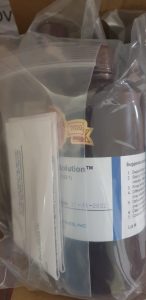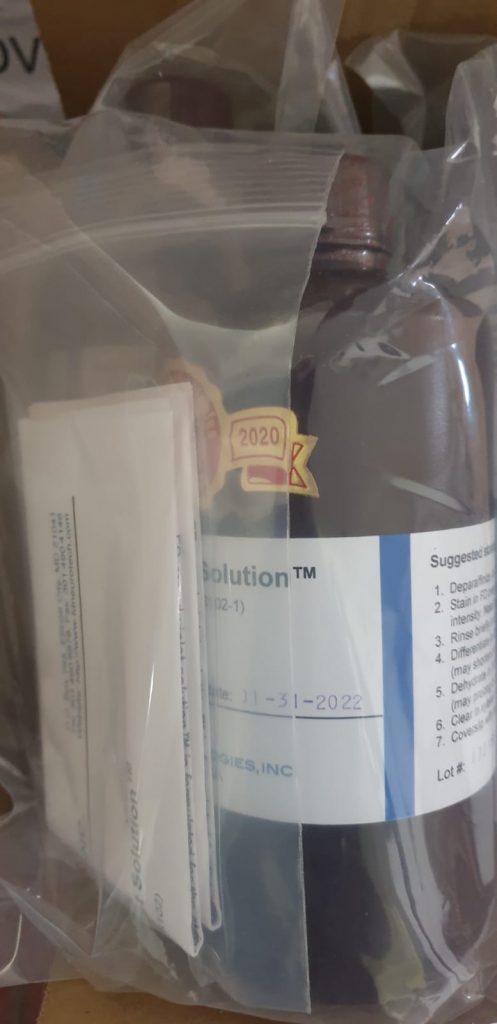Cytological options of placental web site plaques in liquid-based cervicovaginal preparations have been seldom documented in the literature. We current a uncommon case of endocervical placental web site plaque misinterpreted as a low-grade squamous intraepithelial lesion in a liquid-based cytological preparation. A 32-year-old girl with polycystic ovarian syndrome gave beginning 7 months beforehand. After supply, she was identified with cervical low-grade squamous intraepithelial lesion throughout routine cytological examination. Cytologically, many atypical cells confirmed massive hyperchromatic nuclei with irregular membranes.
The perinuclear cytoplasmic clearing intently resembled koilocytosis. Histologically, the endocervix confirmed typical histological options of a placental web site plaque. Immunohistochemically, the trophoblasts have been optimistic for p63, CD10, and inhibin-α however unfavorable for p16. Based on genotyping, each the cytological and biopsied specimens examined unfavorable for human papillomavirus.
We re-examined the liquid-based preparation cytology slides completely and concluded that the atypical cells initially misinterpreted as low-grade squamous intraepithelial lesion have been really trophoblasts. Immunocytochemical staining revealed uniform cytoplasmic inhibin-α expression in the trophoblasts.
In abstract, we demonstrated that endocervical placental web site plaques can mimic low-grade squamous intraepithelial lesions in liquid-based cytological preparations. Immunocytochemical staining outcomes and unfavorable outcomes on human papillomavirus genotyping additional assist that atypical cells resembling koilocytes are trophoblasts obtained from the placental web site plaque.
Utility of Fine Needle Aspiration Cytology in the Evaluation of Lymphadenopathy
Introduction Fine needle aspiration cytology (FNAC) is a fast, efficient and comparatively cheap approach to judge the visibly accessible superficial plenty. As cervical, axillary and inguinal lymphadenopathies are generally encountered scientific issues, in this examine, we evaluated the utility of FNAC for evaluation of lymphadenopathy. Methods A retrospective observational examine was carried out in the Department of Cytopathology, Liaquat National Hospital and Medical College, over the length of three years.
A complete of 559 circumstances have been included in the examine that underwent FNAC. After palpation, two to a few passes have been carried out with a 22-23 gauge needle together with a plunger for FNAC. The obtained materials was unfold on three slides that have been then stained with hematoxylin and eosin (H & E), Papanicolaou (PAP), and Diff-Quik strategies.
The remaining materials was used for cell block preparation. Results The imply age of the sufferers was 37.05±18.03 years. In 98.7% of circumstances, the materials was ample for a passable cytological examination. The most typical web site of FNAC was the cervical lymph node and tuberculous lymphadenitis (37%) was the most typical prognosis on FNAC, adopted by reactive lymphadenitis (27.2%). Reactive lymphadenitis was seen extra continuously in the youthful age group (<15 years), whereas metastatic carcinoma was extra generally seen in the older age group (>50 years).

Tuberculous lymphadenitis was famous extra continuously in the center age group (16-35 years). Moreover, tuberculous lymphadenitis was famous extra generally in cervical lymph nodes, whereas metastatic carcinoma was extra continuously noticed in axillary and inguinal lymph node FNACs. Conclusion FNAC is a fast and dependable technique to categorize the trigger of lymphadenopathy into reactive, inflammatory/infectious, metastatic, and lymphoproliferative, avoiding the necessity of an incisional/trucut biopsy.
Moreover, age, gender, and web site of involvement are helpful predictors of the trigger of lymphadenopathy. We famous that in the youthful age group, reactive lymphadenitis was extra widespread, whereas tuberculous lymphadenitis and metastatic carcinoma have been extra frequent in center and older age teams, respectively. On an identical notice, tuberculous lymphadenitis was extra frequent in cervical lymph nodes than axillary and inguinal lymph nodes, whereas metastatic carcinoma was extra widespread in these latter two websites.
Differential cytology profiles in bronchoalveolar lavage (BAL) in COVID-19 sufferers: A descriptive statement and comparability with different corona viruses, Influenza virus, Haemophilus influenzae, and Pneumocystis jirovecii
Brochoalvelolar lavages (BALs) from sufferers affected by hospitalized infections with SARS-CoV-2, different corona viruses (human coronavirus (HCoV)-229E, HCoV-OC43, HCoV-NL63, and HCoV-HKU1), Influenza virus sort A and B, Haemophilus influenzae and Pneumocystis jirovecii have been in contrast cytopathologically.The intention of the examine was to judge if the mobile profile detectable in BAL could also be particular for the respective pathogens and will result in prognosis of COVID-19 even in the absence of PCR outcomes.
Differential cytology and circulation cytometry datasets of 62 sufferers have been noticed and in contrast.We noticed a big affiliation between particular person cell sample adjustments and the inflicting pathogen, however no normal cell distribution sample.The cytology sample of the BAL fluid in COVID-19 is just not particular sufficient to make use of it as a sole diagnostic criterion, though it could assist scientific resolution making.
The cytology of salivary gland neoplasms with globules of extracellular matrix: Case-based assessment of adenoid cystic carcinoma and its potential mimics
Fine needle aspiration (FNA) cytology is a crucial software for diagnosing salivary gland neoplasms and for guiding scientific administration. The basic adenoid cystic carcinoma (AdCC) is a basaloid neoplasm with plentiful extracellular matrix. The presence globules of extracellular matrix are fairly attribute of AdCC however not diagnostic. We chosen from our information six FNA circumstances that contained at the least some globules of amorphous matrix which are just like the ones seen in AdCC.
The intention of this case-based assessment is to debate the pitfalls and a few of the widespread differential diagnoses of AdCC in FNA cytology. By the finish of this assessment, we hope to have shared with the readers the classes we discovered from these circumstances and to spotlight the key standards wanted to make an accurate prognosis of AdCC based mostly on cytomorphology.
The significance of contemplating different entities, in addition to AdCC, at any time when a salivary gland FNA presents with globules is emphasised.

